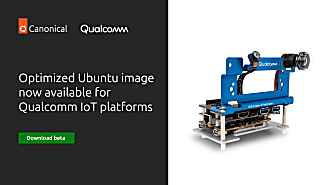Alex Cattle
on 9 July 2019

Traditional development methods do not scale into the IoT sphere. Strong inter-dependencies and blurred boundaries among components in the edge device stack result in fragmentation, slow updates, security issues, increased cost, and reduced reliability of platforms.
This reality places a major strain on IoT players who need to contend with varying cycles and priorities in the development stack, limiting their flexibility to innovate and introduce changes into their products, both on the hardware and software sides.
One notable way to reduce the complexity in multi-component stacks is through the use DevOps – a paradigm that combines development with operations in a single and streamlined process. However, DevOps alone cannot solve the complexity and dependency that exists in monolithic IoT products.
Highlights of this whitepaper include:
- How the decoupling of components in a reliable and predictable fashion will reduce the inter-dependency, improve security and allow for faster development cycles.
- A look at the technical architecture of Ubuntu Core and snaps in the context of an IoT DevOps model.
- Real life case studies of accelerated Linux development cycles as an alternative to the existing model.
To download the whitepaper complete the form below:



